People who worry about the collapse of society are usually preoccupied with that they can do now to prepare for that—they imagine—inevitable eventuality. That preparation invariably involves hoarding of goods, for many of them are interested in shopping and come from

Photo by Cris Faga/REX/Shutterstock (9990525v)
People shopping
Black Friday in Sao Paulo, Brazil – 22 Nov 2018
consumer cultures where the worst world they can imagine is one in which the shops have no goods for sale.
The converse of this mentality is the common scene in nearly every end of the world movie in which the heroes—and in some cases the villains—spend their time filling shopping carts with the suddenly free goods of the collapsed society. This fantasy is predicated on two important notions, that goods will be needed in bulk after the world has crumbled and that those with the most toys win.
Certainly there are some goods, such as foodstuffs, which are perennially essential, but for the most part those Sunday shoppers after the collapse gather flashlights and batteries, guns and bullets, and cans of beans. When the Covid 19 crisis arrived, or was perceived to be arriving, hot items for hoarding turned out to be noodles, tomato sauce, 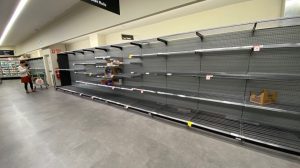 tinned beans, and oddly, toilet paper. I don’t think anyone imagined that toilet paper would become such a sought-for Covid commodity, and as the paper flew off the shelves in bulk, the shops struggled to compensate by increasing their prices.
tinned beans, and oddly, toilet paper. I don’t think anyone imagined that toilet paper would become such a sought-for Covid commodity, and as the paper flew off the shelves in bulk, the shops struggled to compensate by increasing their prices.
My friend is teaching in the far north this winter and her colleagues flew north with their luggage packed to capacity with dried soups and pasta. They envisioned a world in which they would be asked to fend for themselves, and also hoped to save what they saw as the extreme food prices of the north. Partly such urges are about price and scarcity, and partly they are likely some instinctual response which lies deep in the reptilian brain.
This same notions drive 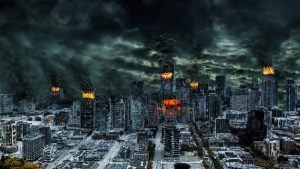 those who would prepare for the unforeseen eventuality of global collapse. As they add toilet paper to their list of what they need to hoard, they cast their minds further into their imagined future. That is when they start to think about the future of currency. They cannot imagine a world in which items cannot be bought, so they try to stave off the inevitable inflation of paper currency with hoarding precious metals. They imagine that gold will retain its value, or even increase, so they hide gold bars under the floorboards, and if they cannot afford gold they buy silver. The more canny amongst them, as they see themselves, purchase silver
those who would prepare for the unforeseen eventuality of global collapse. As they add toilet paper to their list of what they need to hoard, they cast their minds further into their imagined future. That is when they start to think about the future of currency. They cannot imagine a world in which items cannot be bought, so they try to stave off the inevitable inflation of paper currency with hoarding precious metals. They imagine that gold will retain its value, or even increase, so they hide gold bars under the floorboards, and if they cannot afford gold they buy silver. The more canny amongst them, as they see themselves, purchase silver 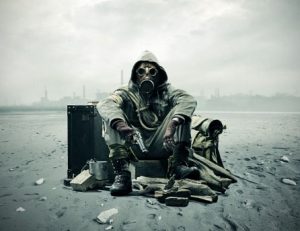 quarters which were minted before 1965 when they were predominantly silver. Thus at one stroke they provide a market for old quarters, and save themselves hundreds or thousands of dollars while still hoarding metal.
quarters which were minted before 1965 when they were predominantly silver. Thus at one stroke they provide a market for old quarters, and save themselves hundreds or thousands of dollars while still hoarding metal.
The premise behind such hoarding is that society will retain a currency culture and that metals precious today will hold their value. Gold is primarily valuable because it does not tarnish, and therefore is useful in electronic work or jewellery where toxicity or allergies are a concern.  Neither of those practices would survive the collapse intact, and the hoarder is left with an attractive but heavy lump of metal no one wants. Silver is more useful, because it is a very good conductor, but within the lifetime of the hoarder the world will scarcely run out of copper wire, mere scavenging will provide enough for any common use, so the prepper is left with more metal for jewellery.
Neither of those practices would survive the collapse intact, and the hoarder is left with an attractive but heavy lump of metal no one wants. Silver is more useful, because it is a very good conductor, but within the lifetime of the hoarder the world will scarcely run out of copper wire, mere scavenging will provide enough for any common use, so the prepper is left with more metal for jewellery.
The best item for the hoarder, if they are truly worried about their purchasing power after society has collapsed around them, is something which has intrinsic value. They shouldn’t rely on metals which are only 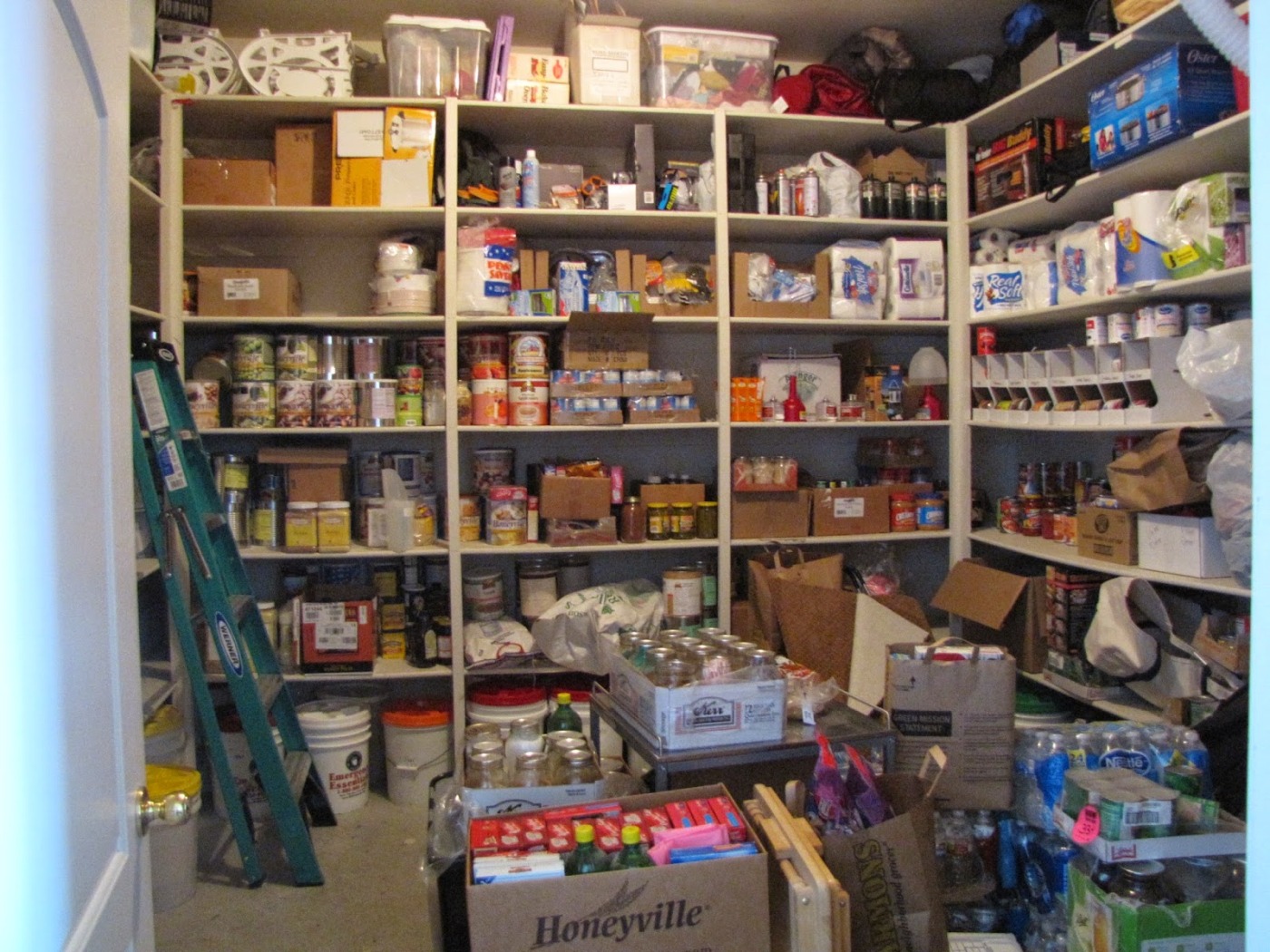 valuable because there is a luxury market, but rather they should consider items like food, which the starving survivor would gladly pay for with gold. Thus, the survivor who has a garden is much better off than the hoarder who has canned beans and toilet paper.
valuable because there is a luxury market, but rather they should consider items like food, which the starving survivor would gladly pay for with gold. Thus, the survivor who has a garden is much better off than the hoarder who has canned beans and toilet paper.
On one of the Doomsday Prepper episodes, one of the survivors touted his foraging skills, and the show followed him as he went along a creekbed gathering weeds for this dinner. His essential goods included salad dressing. One of his statements was more than a little strange however. 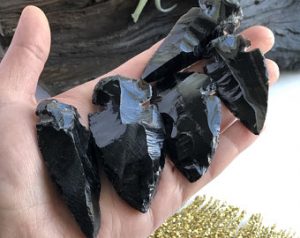 He showed how he’d included in his pack fragments of obsidian for chipping arrowheads. Somehow he imagined a world in which the use of a bow and arrow would be so common that he could use the obsidian for arrow points, rather like our ancestors did some thousands of years ago. I cannot understand how he couldn’t see that the world we occupy, even after a societal collapse, is very different than that of our ancestors. With piles of metals containers, industrial waste, and discarded cars, the scavenger could avail themselves of metal with which to make a much better arrowhead than they would with obsidian, even if they were an experienced knapper.
He showed how he’d included in his pack fragments of obsidian for chipping arrowheads. Somehow he imagined a world in which the use of a bow and arrow would be so common that he could use the obsidian for arrow points, rather like our ancestors did some thousands of years ago. I cannot understand how he couldn’t see that the world we occupy, even after a societal collapse, is very different than that of our ancestors. With piles of metals containers, industrial waste, and discarded cars, the scavenger could avail themselves of metal with which to make a much better arrowhead than they would with obsidian, even if they were an experienced knapper.
This drive to hoard toilet paper and canned goods, guns and bullets, combines with a  kind of back to the land notion, at least in the idealistic imagination of the urban dweller. They do not prepare for that eventuality by converting their lawn to food production, but instead their mind returns to what our ancestors used to prize, obsidian and gold, and their urge to hoard now for later never leaves them room to consider what a real currency might look like.
kind of back to the land notion, at least in the idealistic imagination of the urban dweller. They do not prepare for that eventuality by converting their lawn to food production, but instead their mind returns to what our ancestors used to prize, obsidian and gold, and their urge to hoard now for later never leaves them room to consider what a real currency might look like.
I suggest shovels, although knives, spoons—if they weren’t so common already—and axe heads would work as well. The item hoarded has to satisfy several different functions. It must have an intrinsic value regardless of what world confronts the hoarder. Whether an economic collapse, AI takeover, plague, zombie apocalypse, or decreased human fertility as a result of toxins in the environment, tools like an shovel or an axe have a value which will persist.
The other function that the hoarded item must have is portability. The user must be able to carry it from one place to another if it is to operate as a currency. Gold and silver are also portable, but they are value-dense, where the shovel or axe is not. If the item is too valuable, 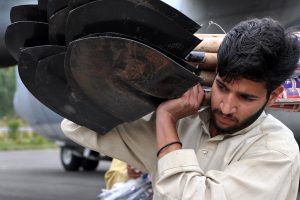 then it draws those who would steal it. The shovel is portable enough to be a currency, valuable enough on its own, but does not accrue value with its multiplication. More shovels are not more valuable than one, for any one person only needs one shovel. In that way, it is the perfect hoarder item.
then it draws those who would steal it. The shovel is portable enough to be a currency, valuable enough on its own, but does not accrue value with its multiplication. More shovels are not more valuable than one, for any one person only needs one shovel. In that way, it is the perfect hoarder item.
I would suggest that a hundred shovel heads—for the handles can be added by the user or become a value-added function of the seller and having a non-functional shovel would discourage stealing—would be the best currency for the hoarder concerned about such things. Even if the world didn’t end, then their shed full of shovel heads might be sold as a lot to a consignment store where they would easily  retain their value. If the worst happened, however, and the hoarder needed to rely on their purchasing value, the gold bearer would show up to their door begging for a shovel so that they might bury their wealth, and they would be prepared to pay a premium for such a useful tool. Other neighbours would come with squash and carrots, chickens and medical knowledge, in order to barter for the shovels the wise prepper had hoarded in advance.
retain their value. If the worst happened, however, and the hoarder needed to rely on their purchasing value, the gold bearer would show up to their door begging for a shovel so that they might bury their wealth, and they would be prepared to pay a premium for such a useful tool. Other neighbours would come with squash and carrots, chickens and medical knowledge, in order to barter for the shovels the wise prepper had hoarded in advance.
A useful tool in all situations, the shovel would become a steady source of income for the hoarder, and trimming poles to make handles a lucrative side industry while others stay crouched over their silver quarters or eating their tinned food.
